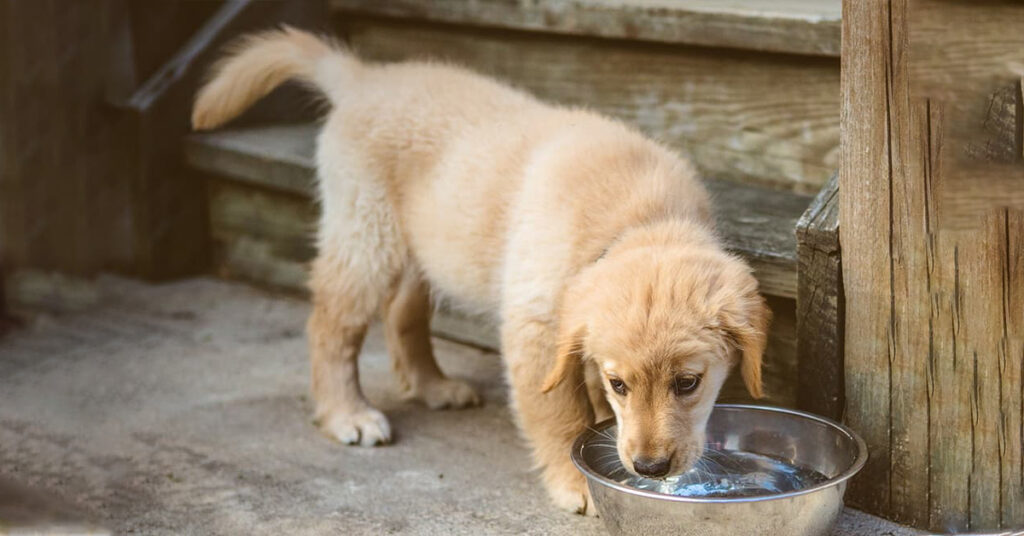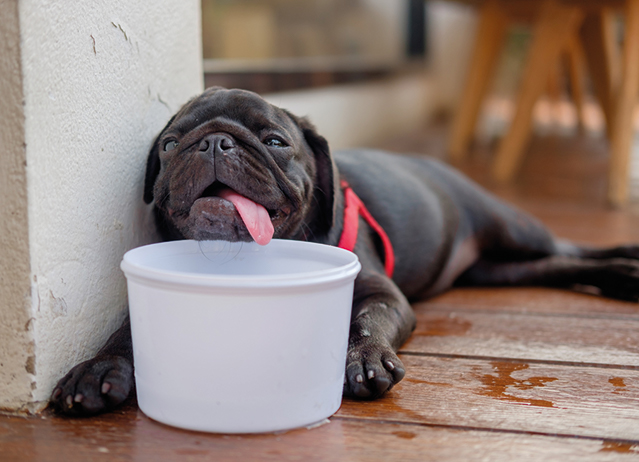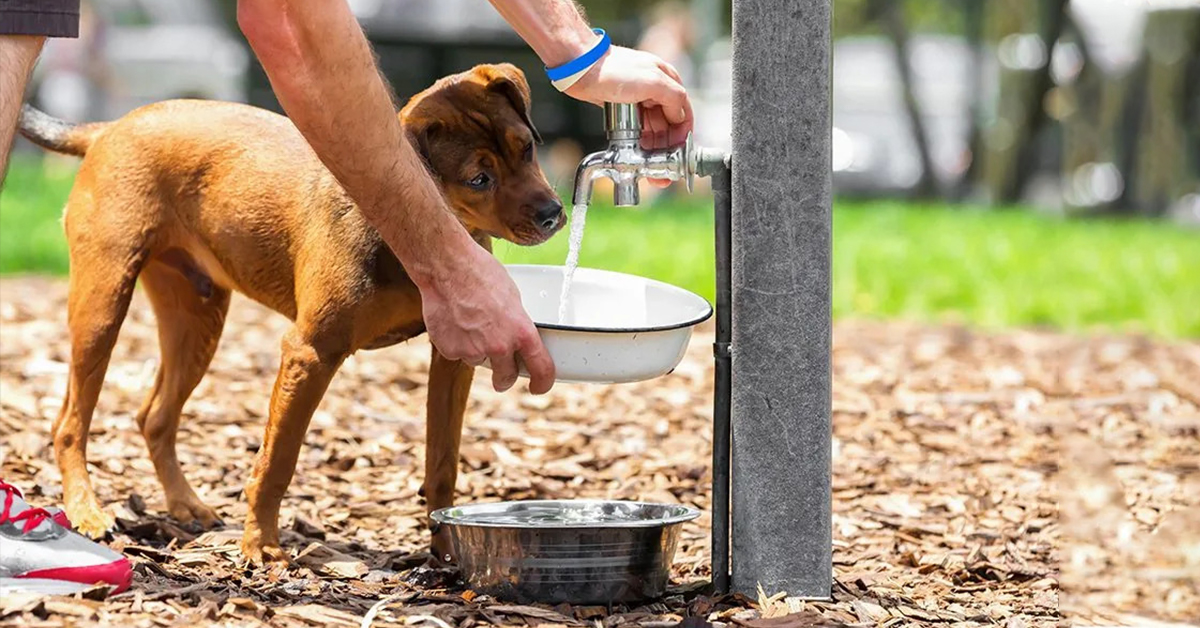Dog water intake is essential for maintaining your furry friend’s health and well-being. Water indeed forms the essence of life not only for human beings but also for their pets. It plays an important role in ensuring that a dog remains healthy, supporting various physiological functions, and regulating body temperature. However, as a responsible dog owner, how much water should you ensure your dog drinks daily? This is a significant question because both overhydration and dog dehydration can pose health risks. You should know how much dog water intake is normal and beneficial for your pet.

Why Is Dog Water Intake Important?
About 60-70% of the body weight in an adult dog is water, and therefore constitutes an important part of physiological functions:
- Body Temperature Regulation: Dogs don’t sweat as humans do. Panting is the usual means of thermoregulation for dogs, though they do sweat to some extent through the paw pads. Therefore, they need water for this cooling mechanism.
- Digestion and Metabolism: Water is crucial in the process of breaking down food and absorption with transport to all parts of the body.
- Joint Lubrication and Muscle Function: Hydration will also ensure that the joints are well lubricated and the muscles are working properly.
- Removal of wastes: Water removes waste materials from the kidneys and maintains healthy urinary organs.
General Guidelines for Daily Dog Water Intake
A general guideline is for dog water intake to be about an ounce of water per pound of body weight every day. Therefore, if you had a 30-pound dog, that dog would need around 30 ounces, or just about 3.75 cups, of water each day. However, this is a pretty general guideline and should not be considered absolute since many factors could alter this rule.
Factors Influencing a Dog’s Water Need
- Size and Weight: Since there are more volumes of liquids to be kept in an enormous body, such large dogs will surely have to take more water compared to small breeds.
- Age: Puppies drink more water per pound of body weight compared to adult dogs because the puppy possesses a high energy level and a high growth rate, but age can also serve as an additional factor with senior dogs possessing different hydration needs- at least if they are diseased.
- Activity Level: The more active the dog, in particular those dogs that engage in some form of physical activity such as running or hiking, the more water will be lost through panting and they will tend to drink more to keep their fluids up.
- Diet: Unlike wet and raw food-fed counterparts, dry kibble-fed dogs require more water as they have a high moisture content.
- Weather and Wet: Animals living in wet or warm climatic conditions easily suffer from dog dehydration, and these animals require more water intake for temperature regulation. Dogs that live in cold climatic conditions tend to drink less.
- Dog Health Issues: Sometimes, dog health issues can cause your pet to avoid drinking water, affecting their overall dog water intake. Conditions such as kidney disease, diabetes, and urinary tract infections can lead to decreased thirst. In some cases, certain medications may also encourage the dog to drink water compulsively, impacting their normal dog water intake patterns.

Signs of Dog Dehydration
Dog Dehydration is a serious problem that can be serious if not treated in time. Some of them include:
- The Dry Nose and Gums: A dog’s nose and gums always have to be wet and smooth. sometimes, they become dry or sticky, then the dog may be dehydrated.
- Loss of Skin Elasticity: If you feel your dog is dehydrated at any time, try gently pinching the skin on your dog’s neck or back. If it does not snap back into place directly, there is a good possibility that your dog is dehydrated.
- Sunk-in Eyes: If your dog’s eyes sink in and/or look dull, they may be dehydrated.
- Lassitude and Weakness: A dehydrated dog will often seem lethargic, seems to lack energy, and simply doesn’t care about playing or doing much of anything.
- Loss of Appetite: Animals that do not take enough water do not eat.
Remember, if you notice any of these signs, offer water immediately and consult your veterinarian if the problem persists.
How to Encourage Your Dog to Drink More Water
If you suspect that your dog is not drinking enough water, the following are strategies you can do to ensure good hydration in the dog and normal dog water intake:
- Change the Water Often: Fresh water is always essential. Some dogs prefer cold water, and this can be important when the weather is warm.
- Multiple water bowls: Provide many water bowls in your house so your dog can easily approach them if your house is big.
- Add water to the food: Add some water to your dog’s dry food at times or just wet it slightly. Add a Little Zing to the Water If your dog is crazy about tuna juice, or the low-sodium version of the broth you use to make their food, you can add a little of either one to their water. Some dogs will drink more if the water has just a little flavor.
- Pet Water Fountain: Some dogs get up for running water. Drinking may become easier if a pet water fountain is added to the room.
- Ice Cubes as Treats: Some dogs like to chew on ice cubes. Hydration is perfect, especially on a hot day.
- Water Monitoring During Exercise: No one ever leaves the house to go exercise with his or her dog without water. Ensure you give your dog adequate and regular water breaks when exercising together to prevent overheating and dehydration.
Special Considerations for Puppies and Senior Dogs
Dogs: Because puppies have small body sizes and a much more active lifestyle, they can get dehydrated easily. Provide fresh water at all times and observe to ensure they drink in sufficient quantities, especially in times of heightened play and once they have eaten.
Senior Dogs: These dogs will not regulate their body temperature as efficiently, and they may be more prone to conditions that would impair their hydration status. Thus, they tend to drink less on their own so take special care to monitor their intake and promote their hydration status.
The Risks of Overhydration
On the other side, there is another danger in which dogs ingest too much water. It is mostly known as water poisoning or hyponatremia. This is rather rare and can happen to any dog. This is considered to happen when a dog water intake is more in a very short time, for example, while playing in a lake or a pool. Symptoms include:
- Vagabonding
- Nausea or vomiting
- Loss of coordination
- Bloating
- Seizures
Water intoxication is an emergency sign that would call for veterinary care immediately, if present.
When to See a Veterinarian
Discuss with your veterinarian if your dog water intake is more than usual or less than usual because that could be an indication of the presence of several dog health issues, such as kidney diseases, diabetes, or Cushing’s disease.
Related: 6 Natural Flea Remedies For Dogs

